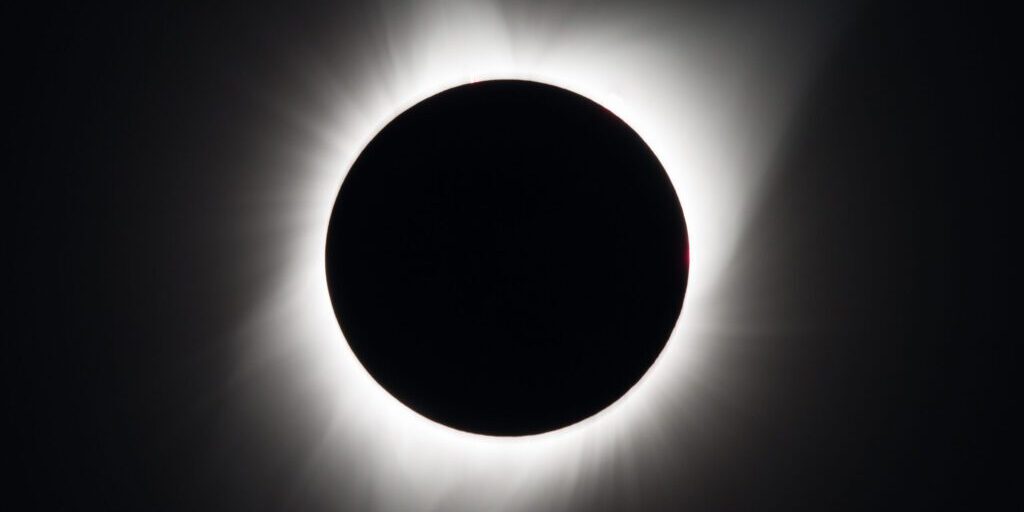Clouds and rain obscured Nome’s view of the “Great American Eclipse” on Monday, but Western Alaskans can take heart: another total solar eclipse is coming in 2033, and this time, Nome will be at the center of it all.
Call it the “Great Bering Strait Eclipse.”
On the morning of Wednesday, March 30th, 2033, a total solar eclipse will darken skies throughout western Alaska and eastern Russia. The path of “totality,” in which the moon will completely block the light of the sun, will directly cross the city of Nome. Totality will also happen throughout the Seward Peninsula, Norton Sound coast, and St. Lawrence Island, in addition to Kotzebue and Utqiagvik, as well as the eastern Russia cities of Provideniya, Anadyr, and Uelen.

By the luck of the astronomical lottery, Nome lies directly in the center of the eclipse’s path. On March 30, 2033, the eclipse will peak at 9:47am in Nome’s southern sky, with totality happening several minutes beforehand in communities like Unalakleet, Koyuk, Emmonak, Savoonga, and Gambell, and then several minutes later in places like Teller, Wales, Diomede, and Shishmaref.
But Western Alaska’s good astronomical fortune could also spell logistical headaches for the region. The 2033 eclipse may lure to rural sub-Arctic communities hundreds or even thousands of eclipse tourists, or so-called “eclipse chasers.” Earlier this week, tourists seeking a good view of the August 21 eclipse sold out hotels and choked highway systems throughout the path of totality in the Lower 48, from Oregon to South Carolina.
Even a small fraction of those visitors would overwhelm the tourism capacities of Nome, Kotzebue, Utqiagvik, and nearby villages. And assuming that the Iditarod Trail Sled Dog Race is still alive and well in 2033, the eclipse will be the second event in just a matter of weeks to bring a large share of visitors to Nome, a city of only 3,000 people. The 1,000-mile Iditarod, which runs from Anchorage to Nome, typically finishes in mid-to-late March.
And while beds and airline flights to Nome will be booked months or even years in advance, what won’t be known until just hours or even minutes beforehand is whether the skies over the Bering Sea will be clear enough to see the solar eclipse in all of its majesty. With 5,700 days to go to the 2033 eclipse, it may not be too early to start crossing fingers for clear skies.

Image at top: The total solar eclipse — nicknamed “The Great American Eclipse” — seen over Madras, Oregon, on Monday, August 21, 2017. Photo: Aubrey Gemignani, NASA, public domain; via Wikimedia Commons.
Eclipse predictions by NASA / Fred Espenak (EclipseWise.com).







